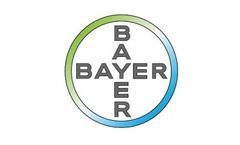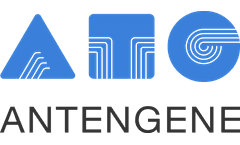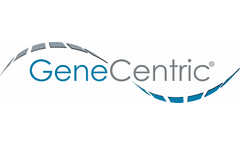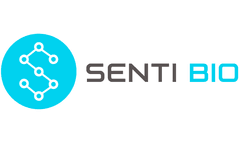Refine by
Tumor Microenvironment Articles & Analysis
56 news found
The HZ-PEG-HZ (1K) product is critical for applications including: l Controlled Drug Delivery Systems: Leveraging its pH-sensitive hydrazone bonds for targeted and controlled release of active pharmaceutical ingredients in specific physiological environments (e.g., tumor microenvironments, endosomes, lysosomes). l Bioconjugation and Crosslinking: Facilitating the ...
Through our neoantigen research service, Alfa Cytology identifies unique cancer-carrying genes by sequencing tumor cell genes to predict immune presentation affinity. Then we screen out characteristic neoantigens encoded, hoping to make a huge contribution to tumor ...
An inhibition of DGKzeta has been demonstrated to enhance T-cell priming against suboptimal tumor antigens and has the potential to overcome multiple immune-suppressive mechanisms in the tumor microenvironment. ...
ByBayer AG
“The mechanism of action of ATG-037 in inhibiting adenosine-generating CD73 is expected to reverse an immunosuppressed tumor microenvironment, thereby creating potential additive benefit with multiple immuno-oncological approaches. ...
Meanwhile, complex factors and multiple mechanisms are known to induce drug resistance occurrence or reoccurrence, covering tumor heterogeneity, DNA damage repair, apoptosis inhibition, epithelial-mesenchymal transition, increased drug excretion or reduced absorption, decreased drug activity, altered drug metabolism, altered drug target, and tumor ...
Highlights: ES019 phagocytosis activity is corrected with PD-L1 level on tumor cells ES019 leads to better phagocytosis capability of tumor cells by M2-like than M1-like macrophage ES019 activates T cells without induction of phagocytosis of T cells ES019 shows favorable PK in mouse model ES019 demonstrates single agent anti-tumor ...
CD73 generates adenosine, which leads to immunosuppression in the tumor microenvironment. ATG-037 has demonstrated promising preclinical efficacy as a monotherapy and in combination with ICIs and chemotherapy agents. ...
About PMC-309 PMC-309 is a novel anti-VISTA (V-domain Ig Suppressor of T cell Activation) antagonizing antibody that can be used for the treatment of various tumor types. By inhibiting VISTA, an immune checkpoint receptor mainly expressed on MDSC (Myeloid-Derived Suppressor Cells) and Tregs (regulatory T cells), it can play a pivotal role in maintaining the immunosuppressive ...
A biomarker strategy will include evaluation of a specific, sensitive and proprietary LILRB2 antibody for immunohistochemistry to enable tumor selection with an increased probability of success. “We are very pleased with the rapid enrollment and early completion of dose escalation of IO-108 in solid tumor patients. ...
IO-108 is being studied as a monotherapy and in combination with select anti-PD-1 antibodies in multiple expansion cohorts of solid tumors Clinical supply agreement with Regeneron accelerates Immune-Onc’s solid tumor clinical development program Immune-Onc Therapeutics, Inc. ...
In the context of solid tumors, preclinical data presented at the 2021 American Association for Cancer Research annual meeting demonstrate that IO-202 enhances dendritic cell function and T cell activation in vitro and inhibits tumor growth in an immune competent model in vivo. ...
As a myeloid checkpoint inhibitor, IO-108 has demonstrated the ability to relieve immunosuppression in the tumor microenvironment by blocking LILRB2. The combination of IO-108 and anti-PD-1 may enable more patients across multiple solid tumor types to benefit from immune checkpoint inhibitors,” commented by Maggie Gu, China general manager ...
The paper also found that inhibition of this function of PAD4 reduces primary tumor growth and metastasis and enhances checkpoint inhibitor treatments. ...
” A primary focus of the study was to obtain a deeper understanding of the tumor microenvironment similarities and/or differences that may lead to IL-2 or anti-PD-(L)1 therapy response. ...
GBM is an aggressive, deadly, and treatment-resistant type of malignant brain tumor, affecting approximately 13,000 newly diagnosed patients each year in the United States. ...
ByCervoMed
“Our MOS technology supports the development of new insights into tumor microenvironments and heterogeneity of the originating tumor tissue for accurate, rapid and high-throughput therapeutic profiling. ...
Uses of Proceeds and Planned Milestones Proceeds from the transaction are expected to provide Senti Bio with capital to further develop its gene circuit technologies and therapeutic pipeline, including: Conducting Investigational New Drug- (IND) enabling studies for SENTI-202 and SENTI-301 Building out clinical-scale current good manufacturing practice (cGMP) capabilities and enabling cGMP ...
“The addition of Dan Hayes to our CAB highlights the excitement of building our MOS technology across important tumor types. To have five of the world’s leading oncologists recognize the potential of our MOS technology to revolutionize the way we approach cancer therapy is gratifying,” said David Hsu, MD, co-founder of Xilis. ...
CX-904 is a conditionally activated T-cell-engaging bispecific (TCB) designed to target the epidermal growth factor receptor (EGFR) on cancer cells and the CD3 receptor on T cells within the tumor microenvironment. “The successful initiation of this first-in-human study represents another major milestone for CytomX, as it marks the third therapeutic ...
“Our next-generation cell therapies, powered by our proprietary gene circuit technology, are designed to target multiple disease pathways to overcome the tumor microenvironment and provide enhanced cancer-killing activity. ...














